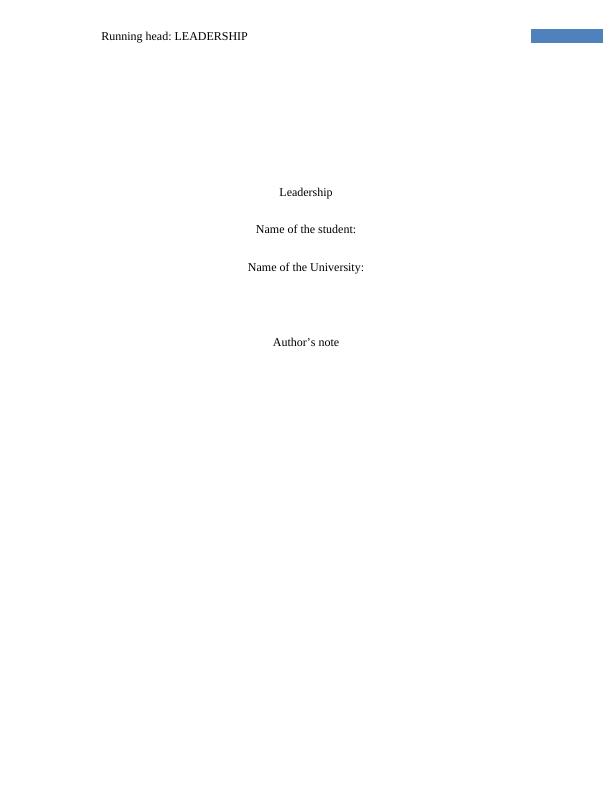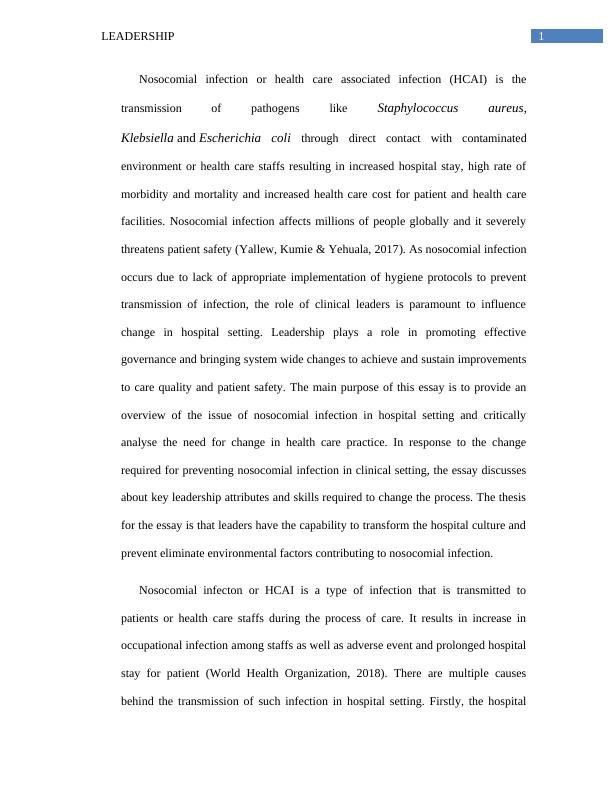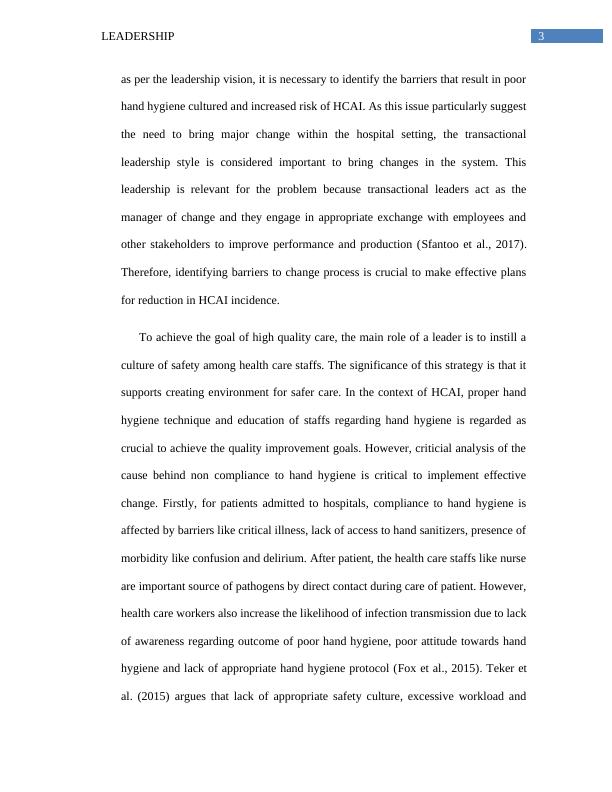Leadership in Preventing Nosocomial Infection
12 Pages2936 Words421 Views
Added on 2023-04-21
About This Document
This essay discusses the role of leadership in preventing nosocomial infection in hospital settings and the need for change in healthcare practices. It explores key leadership attributes and skills required to bring about change and highlights the importance of hand hygiene and environmental modifications. The essay concludes that effective clinical leadership is crucial in promoting improvements in quality of care and patient safety.
Leadership in Preventing Nosocomial Infection
Added on 2023-04-21
ShareRelated Documents
End of preview
Want to access all the pages? Upload your documents or become a member.
Health Care Setting in Nursing Assignment
|5
|936
|26
Master of Hospital Management Field Practicum Course: ATTITUDES AND BARRIERS FOR OPTIMAL HAND HYGIENE AMONG HEALTH CARE PROVIDERS in ZAYED MILITARY hospital AL BATAYEH, SHARJAH
|22
|7086
|339
Hand Hygiene: Importance, Compliance, and Strategies for Prevention of Healthcare-Associated Infections
|10
|2403
|46
Hand Hygiene Practices as a Quality Indicator in Healthcare
|12
|3433
|292
NURS2006 - Chronic Illness and Nursing Care
|12
|2694
|68
Formulating a Clinical Question on Hospital Acquired Infection
|7
|1270
|438




